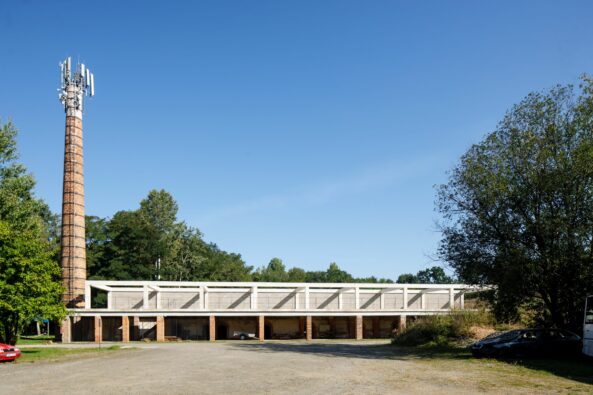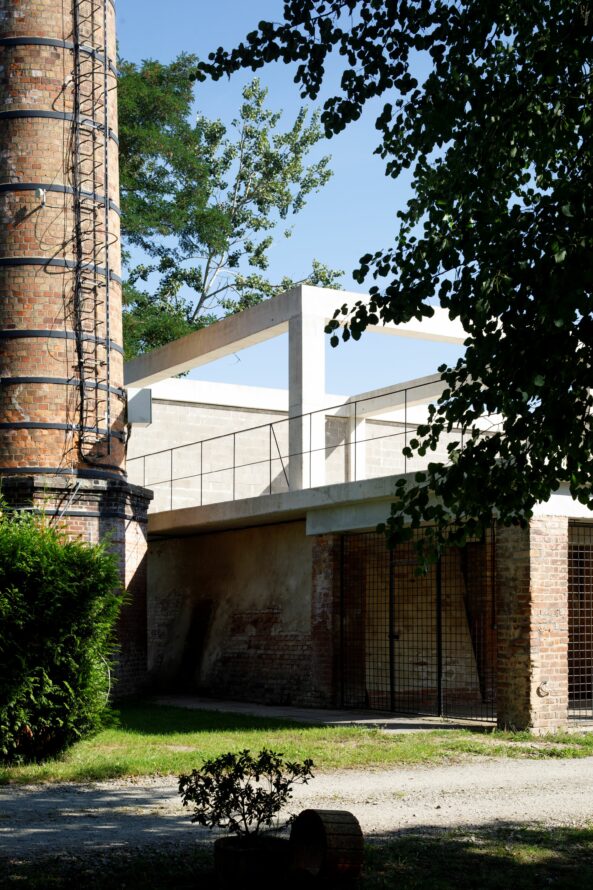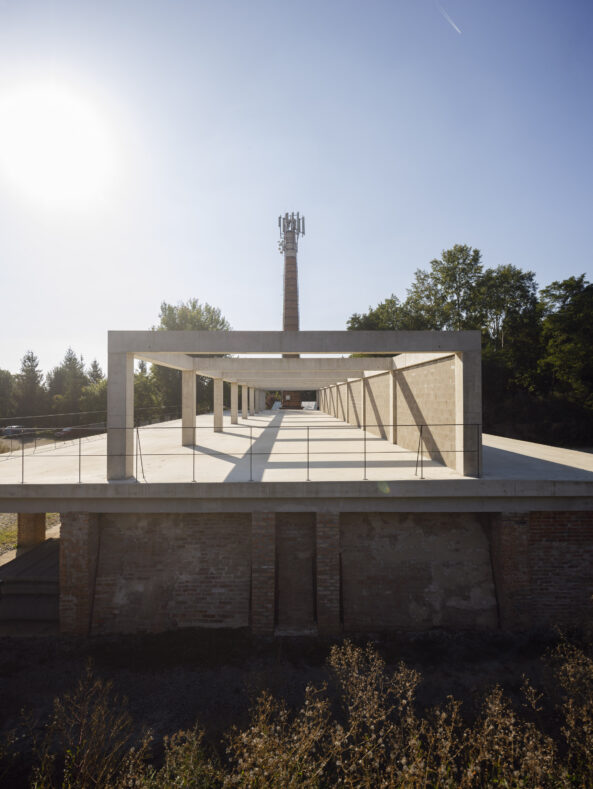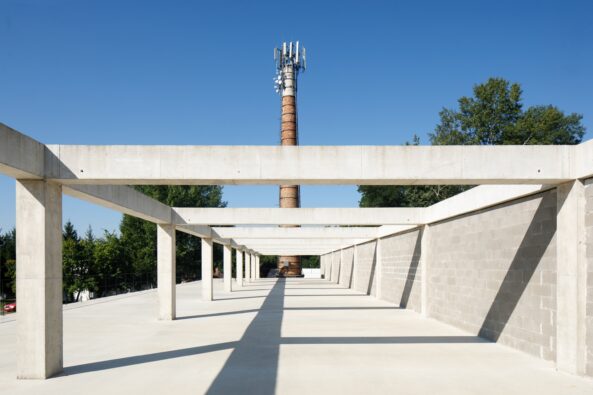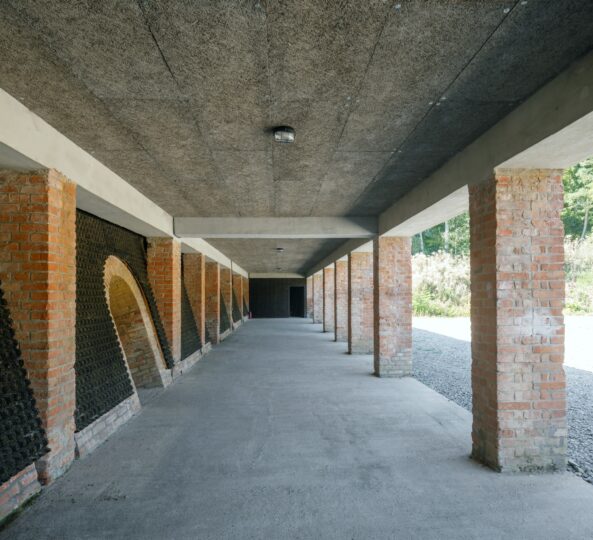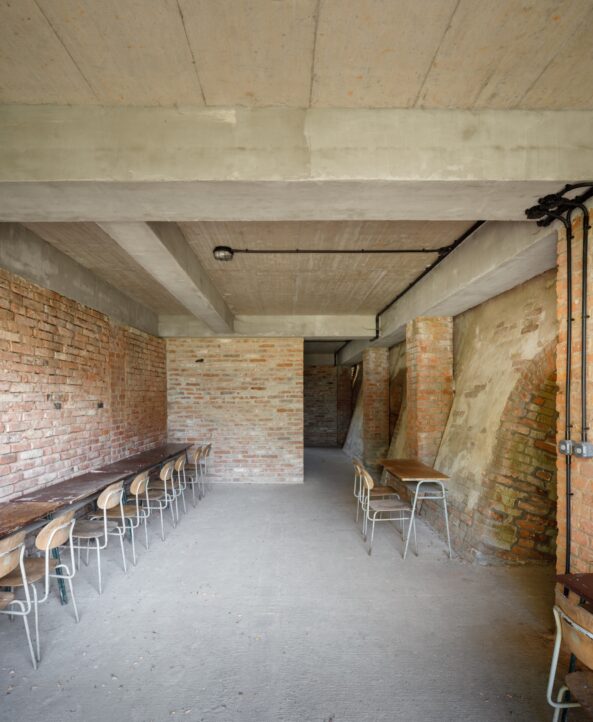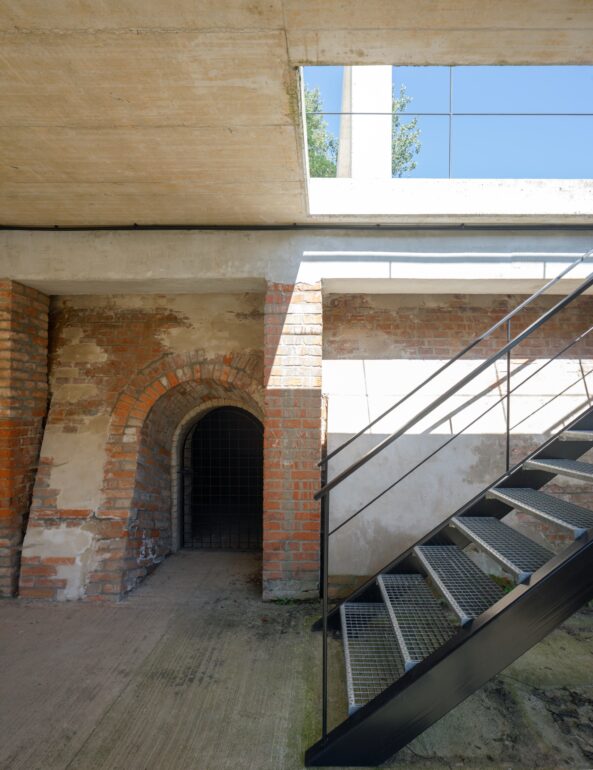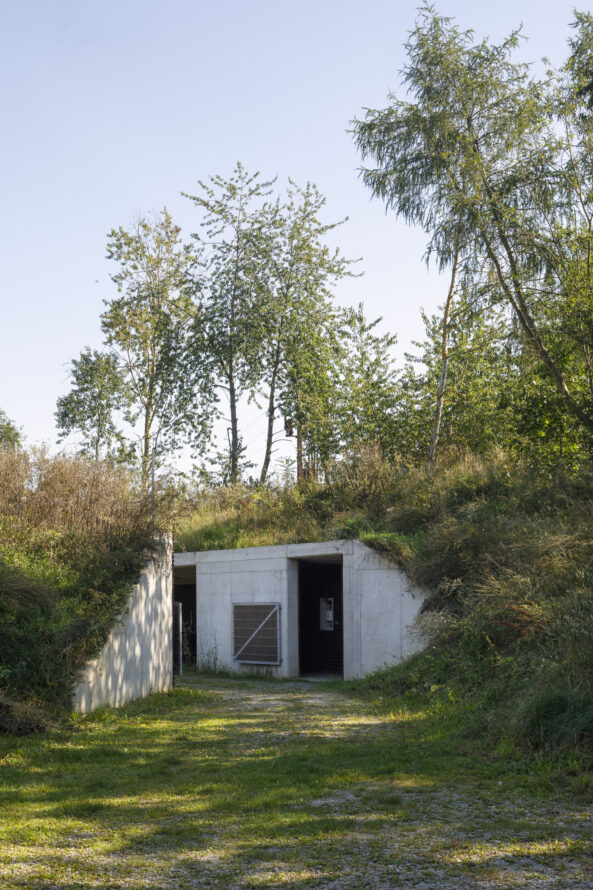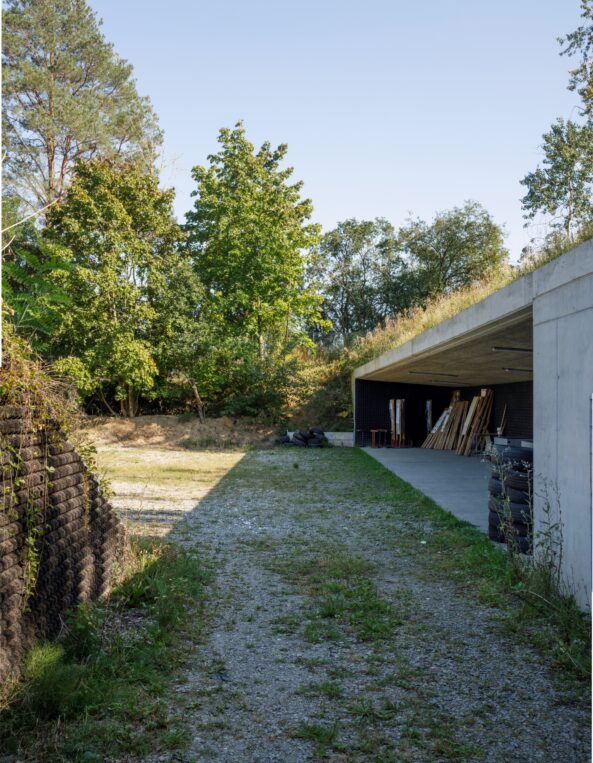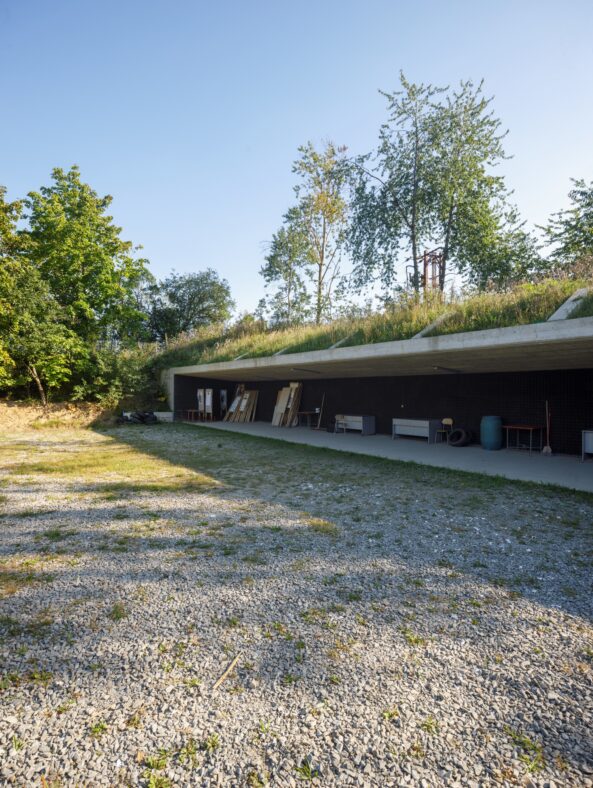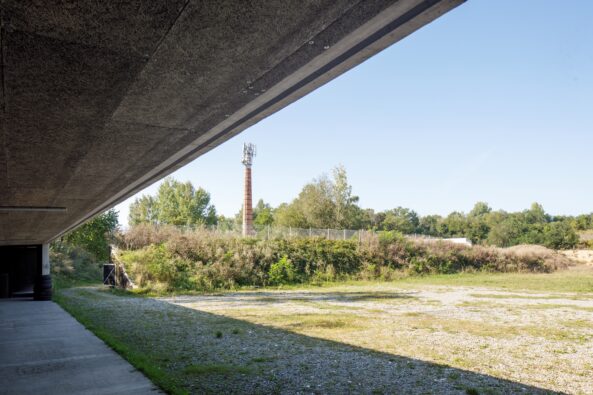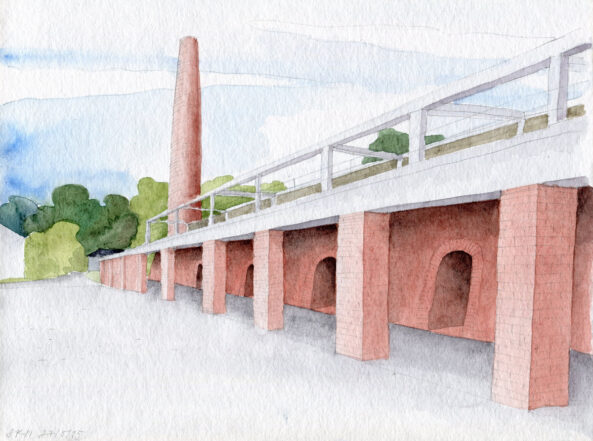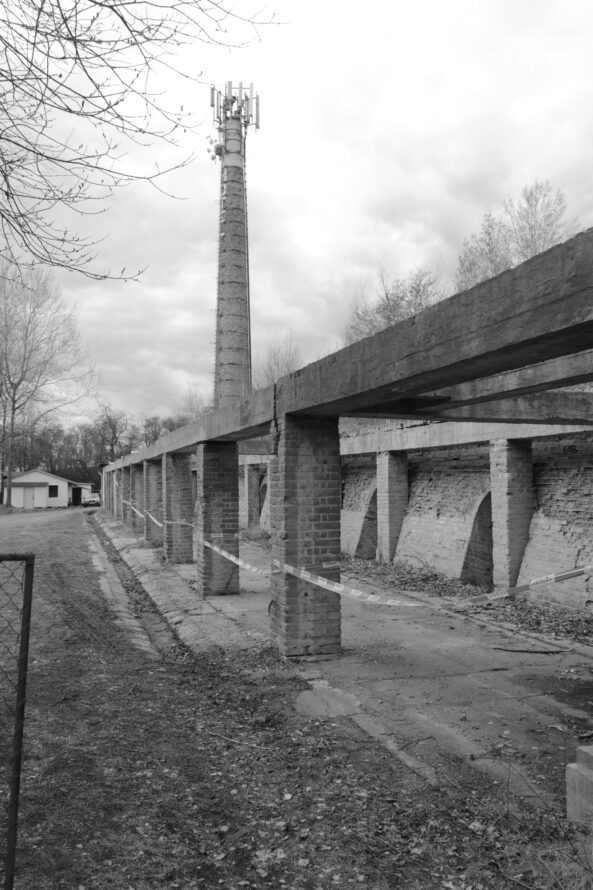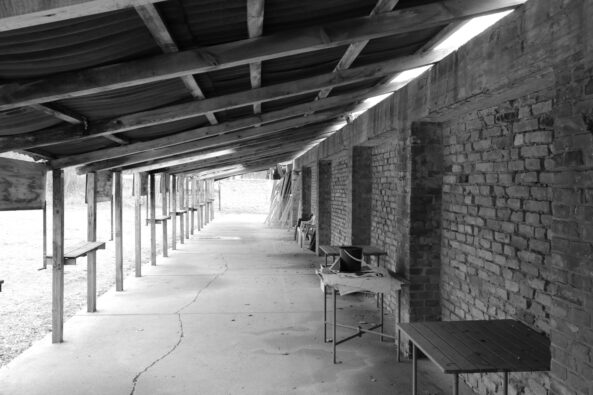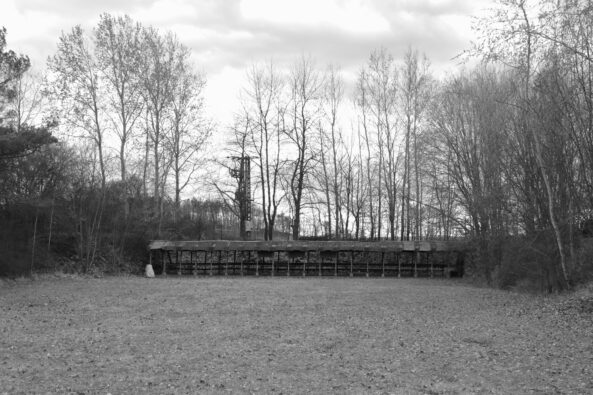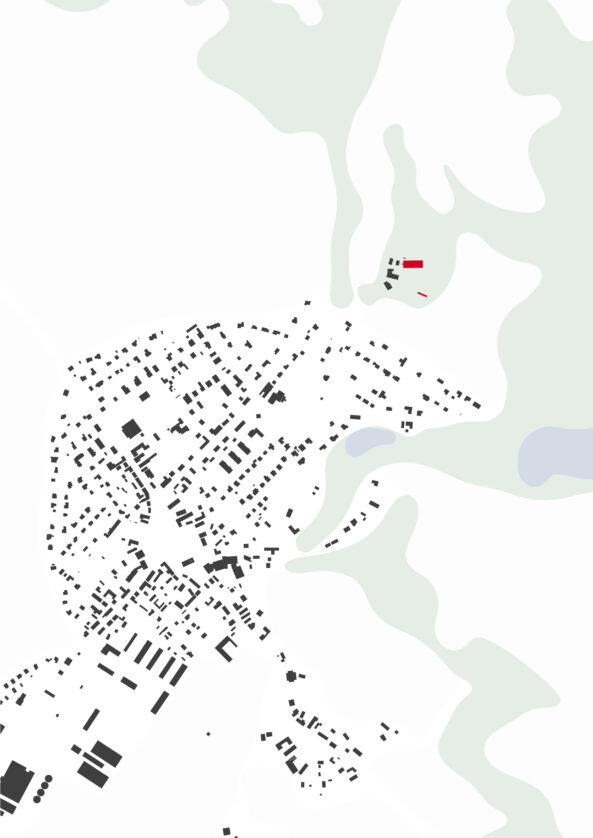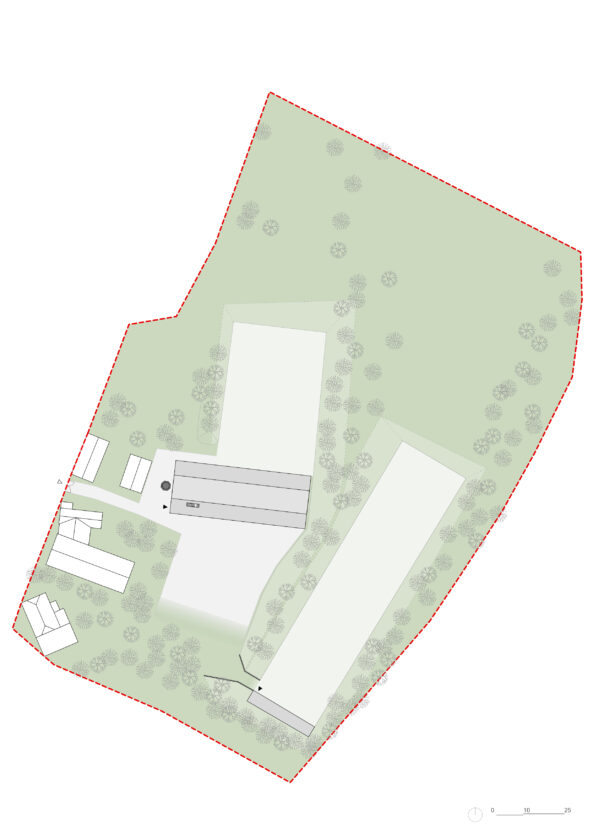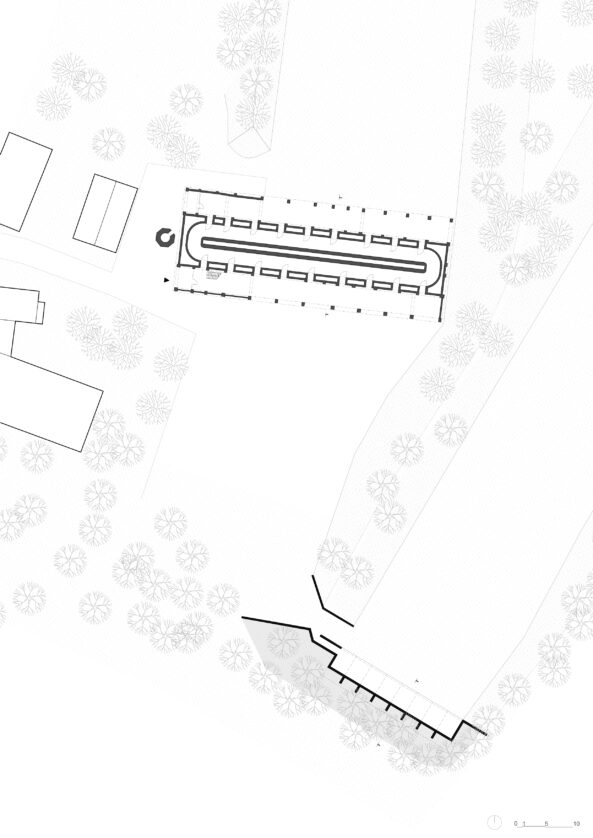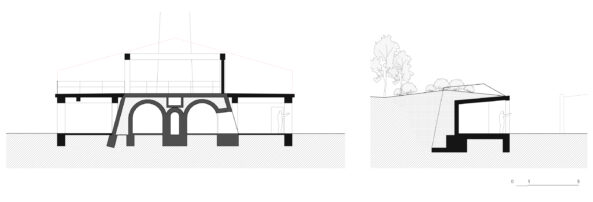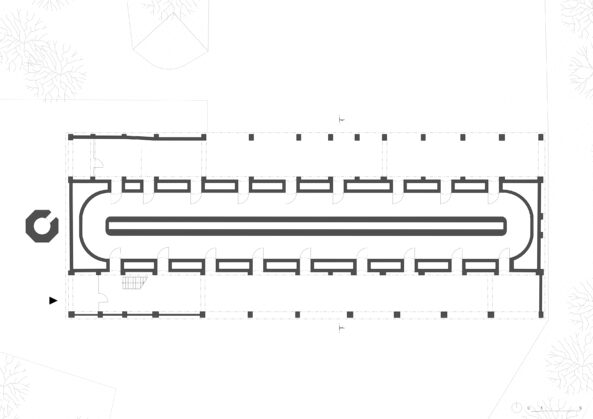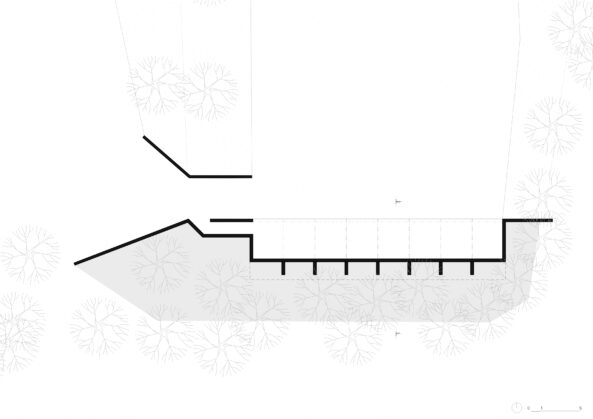Shooting range in Kněžmost
Architecture: Martin Rusina, Martin Frei
Structure: STA-CON s.r.o.
Accustic: BERYL, spol. s r.o.
Balistic assessment: Doc. Ing. Alois Skoupý, CSc.
Client: Ministerstvo vnitra ČR
Area: Kněžmost
Project: 2019-2020
Realization: 2021
Shooting range in Kněžmost
Architecture: Martin Rusina, Martin Frei
Structure: STA-CON s.r.o.
Accustic: BERYL, spol. s r.o.
Balistic assessment: Doc. Ing. Alois Skoupý, CSc.
Client: Ministerstvo vnitra ČR
Area: Kněžmost
Project: 2019-2020
Realization: 2021
The project is the conversion of a well-preserved kiln of a former brickyard from the 19th century for the needs of a police shooting range. The brickyard itself operated until 1976, and a shooting range was established here in the 1990s. Since then, the building has fallen into disrepair despite its value as an industrial monument.
In 2018, the complex was bought by the state. It was planned to demolish the well-preserved circular kiln with the use of residual material for building noise barriers. However, after a detailed analysis, it was found that the furnace can be preserved and put to good use for the facilities of the shooting range without the need to demolish it. After cleaning and repairing the original masonry, the structure was given a new concrete roof and a sound-proof wall. The first floor was built in the place of original collapsed gable roof, which is inserted into the imaginary outline of the roof and thus respects its height. This part is used for special training of forces.
The building of the existing furnace was supplemented with a new construction of a shooting range embedded in the ground with a range of 100 meters, which was statically designed in such a way as to maximize the release of space without the need to use vertical supporting structures, with the help of a ceiling plate suspended on reinforced concrete overhangs.
An integral part of the project was also a fundamental solution of landscape and terrain improvements, which became a natural noise barrier.

